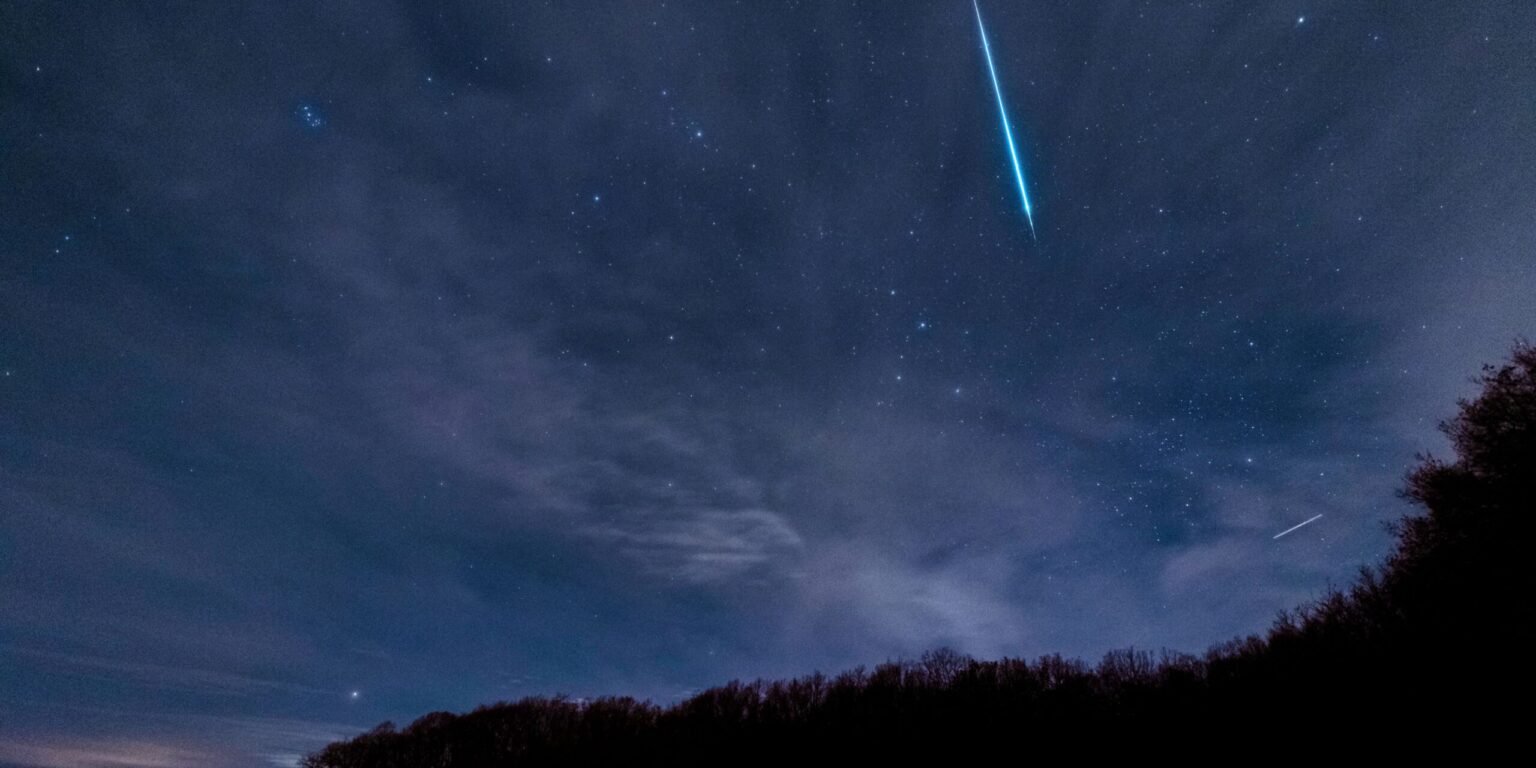By Marcus Kline, Senior Correspondent
In the early hours of Tuesday, May 21, a dazzling fireball lit up the skies across the Central United States, catching the attention of skywatchers and sparking widespread awe. The meteor, identified as a bolide due to its exceptional brightness and explosive fragmentation, was witnessed in six states including Colorado, Kansas, Missouri, Nebraska, Oklahoma, and Texas.
Over 50 eyewitnesses reported the spectacle, describing a vivid green meteor that streaked across the sky from east to west. Some accounts noted multiple bursts as the meteor broke apart mid-flight, illuminating the night with dramatic flashes.
An Unforgettable Nighttime Display
Around 3 a.m., residents across the central U.S. witnessed what many described as a once-in-a-lifetime event. A brilliant green object cut through the night sky, leaving behind a glowing trail. Some said the meteor’s light was intense enough to briefly turn night into day.
“It looked like an emerald shooting star, only bigger and brighter,” said one witness. “Then it exploded in pieces—like fireworks in slow motion.”
Others described hearing a faint rumble moments after the light faded, suggesting a sonic boom generated as the object broke apart high in the atmosphere.
What Exactly Is a Bolide?
A bolide is a particularly bright meteor that explodes before reaching the ground. These events occur when a space rock enters Earth’s atmosphere at high speed—often over 30,000 miles per hour—and experiences intense pressure and heat. This causes it to combust violently, sometimes breaking into smaller fragments.
The green coloration often comes from the presence of magnesium or nickel, which emit green hues when vaporized.
A Closer Look at the Meteor’s Journey
Based on witness reports and amateur video footage, the fireball entered the atmosphere from the east and traveled westward before disintegrating at an altitude estimated to be between 20 to 30 miles above the ground. No ground impacts or injuries were reported, though the exact location of any potential meteorite fragments remains uncertain.
Investigators continue to examine video submissions and trajectory data to determine the fireball’s origin. It’s believed to have come from the asteroid belt located between Mars and Jupiter, where many similar meteors originate.
A Public Stir
As soon as the meteor flashed across the sky, social media lit up with videos and eyewitness reactions. Doorbell cameras, dashboard cams, and even drones captured footage of the spectacle. In several areas, emergency services received calls from concerned citizens who mistook the meteor for an aircraft or missile.
Hashtags such as #GreenFireball and #MeteorWatch quickly began trending online, as users from different states shared their own views and experiences.
Why Events Like This Matter
While fireballs like this one rarely cause damage, they serve as captivating reminders of the Earth’s ongoing interaction with space. Each such meteor provides valuable insight into the composition of space debris and the dynamics of Earth’s atmosphere.
These natural events also play an important role in fostering public interest in astronomy. For many, witnessing a meteor of this magnitude sparks a deeper curiosity about the universe and encourages participation in skywatching activities.
Looking Ahead
The fireball appears just ahead of the summer meteor shower season, with major displays like the Perseids in August expected to provide more skywatching opportunities. Stargazers are advised to mark their calendars and keep their eyes on the skies.
